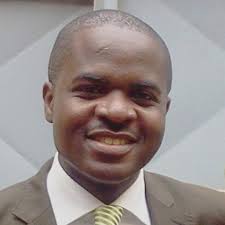La dysplasie fibreuse de l’os temporal, une cause rare de surdité de diagnostic scanographique : rapport de cas
DOI:
https://doi.org/10.55715/jaim.v15i4.555Keywords:
fibrous dysplasia, petrous bone, scanner.Abstract
Introduction : Fibrous dysplasia is a rare benign congenital pathology. Its temporal location is rare with auditory complications. In the literature, only 60 cases have been described to our knowledge. The scanner do its diagnosis; we report a case, in order to recall the CT semiology.
Observation : 46-year-old woman is admitted for left-sided hypoacusis associated with chronic left ear dysmorphism. She is referred to an ENT specialist for better management. Physical examination showed a detachment of the left pinna and a hard mass bulging the anterior wall of the left external auditory canal. Threshold tone audiometry revealed severe mixed first-degree hearing loss with a hearing threshold of 72 dB on the left. Computed tomography of the petrous bones showed diffuse hyperdensity of the temporal bone with a sclerotic appearance and hypertrophy. There was also a densification of the footplate of the stapes and a widening of the ossicular V. The diagnosis fibrous dysplasia of the temporal bone was retained. Awaiting histological confirmation and a therapeutic proposal, the patient was lost to sight.
Conclusion : Fibrous dysplasia of the temporal bone is a rare pathology. The scanner of the petrous bone makes it possible to make a positive diagnosis and to detect the damage, in particular the ossicular, responsible for the deafness.
RÉSUMÉ
Introduction : La dysplasie fibreuse est une pathologie congénitale bénigne rare. Sa localisation temporale est rare et émaillée de complication auditive. Dans la littérature seulement 60 cas ont été décrit à notre connaissance. Le scanner permet de faire son diagnostic ; nous rapportons un cas, afin de rappeler la sémiologie scanographique.
Observation : Il s’agit d’une patiente de 46 ans, reçu pour hypoacousie à prédominance gauche associée à une dysmorphie de l’oreille gauche d’évolution chronique. Devant l’intensification des symptômes elle est référée en ORL pour une meilleure prise en charge. On ne retrouvait pas d’antécédent familial ou personnel particulier. L’examen physique montrait un décollement du pavillon gauches et une masse dure bombant la paroi antérieure du conduit auditif externe gauche. L’audiométrie tonale liminaire retrouvait une déficience auditive sévère de premier degré mixte avec un seuil auditif de 72 dB à gauche. La tomodensitométrie des rochers a montré une hyperdensité diffuse en verre dépoli de l’os temporal avec une hypertrophie osseuse. On notait également une densification de la platine de l’étrier et un élargissement du V ossiculaire. Le diagnostic dysplasie fibreuse de l’os temporal a été retenu. En attente d’une confirmation histologique et d’une proposition thérapeutique, la patiente a été perdu de vu.
Conclusion : La dysplasie fibreuse de l’os temporal est une pathologie rare. Le scanner du rocher permet de faire le diagnostic positif et de détecter les atteinte notamment ossiculaire responsable de la surdité.
Downloads
References
2. Zainine R, Kedous S, Ennaili M, Chahed H, Mediouni A, Beltaief N, Besbes G. LA Dysplasie Fibreuse Du Rocher J. Tun Orl - N° 30 Juin - Decembre 2013
3. D'Archambeau O, Parizel PM, Koekelkoren E, Van De Heyning P, De Schepper AM. CT diagnosis and differential diagnosis of otodystrophic lesions of the temporal bone. European Journal of Radiology. 1 juill 1990;11(1):22‑30.
4. Jamshid Tehranzadeh Ying Fung Michael Donohue Arash Anavim Henry W. Pribram. Computed tomography of Paget disease of the skull versus fibrous dysplasia. Skeletal Radiol (1998) 27 : 664±672. Disponible sur https://scholar.google.com
5. Paul R. Lambert, Derald E. Brackmann Fibrous Dysplasia of the Temporal Bone: The use of Computerized Tomography. Otolaryngology Head and Neck Surgery. 1984; 92 (4): 461-67 doi/abs/10.1177/019459988409200416
6. Lawrence R, Lustig, Michael J. Hollyday, Edward F Mc Carthy, George T Nager. Fibrous Dysplasia Involving the skull Base and Temporal Bone. Arch Otolaryngol Head Neck Surg. 2001; 127: 1239-1247
7. Héran F, Williams M, Ayache D. IRM du temporal IRM du temporal. J Radiol 2006 ;87:1783-94.
Downloads
Published
How to Cite
Issue
Section
License

This work is licensed under a Creative Commons Attribution-NonCommercial-ShareAlike 4.0 International License. Copyright @2017. This is an open-access article distributed under the terms of the Creative Commons Attribution-NonCommercial-ShareAlike 4.0 International License (http://creativecommons.org/licenses/by-nc-sa/4.0/) which permits unrestricted non-commercial used, distribution and reproduction in any medium






